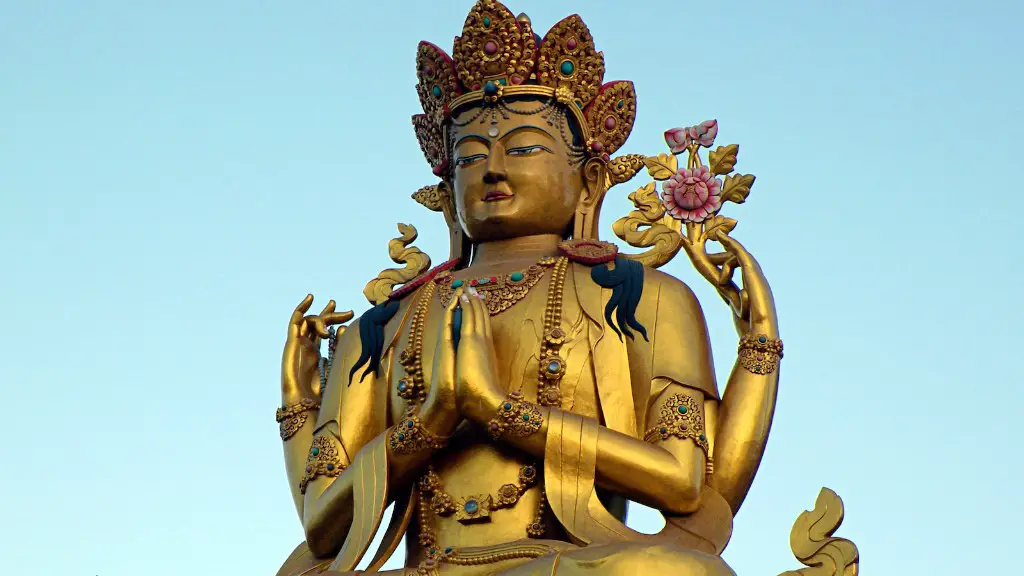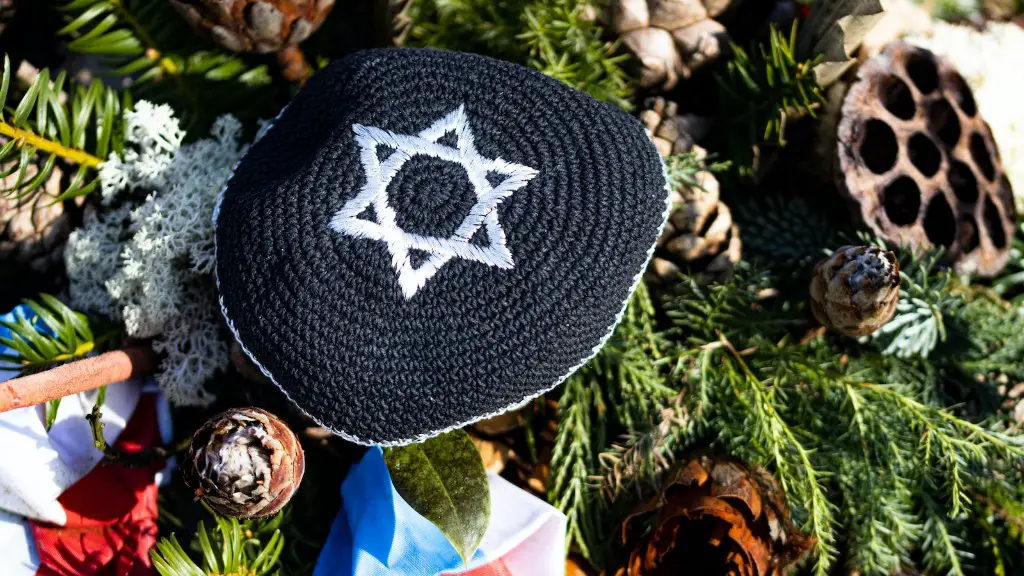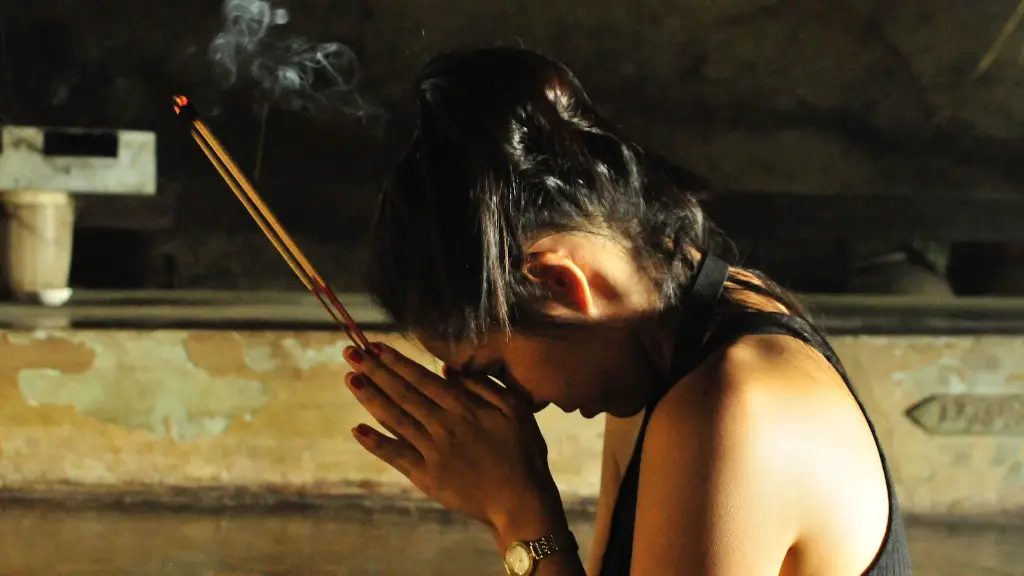In Buddhism, the Sangha is the community of ordained monks and nuns. The Sangha also includes laypeople who have taken the Three Refuges and the Five Precepts. The Three Refuges are taking refuge in the Buddha, the Dharma and the Sangha. The Five Precepts are abstaining from taking life, taking what is not given, sexual misconduct, untrue speech and intoxication.
Sangha is a Buddhist term most commonly used to refer to the monastic community of monks and nuns.
What is the meaning of Sangha in Buddhism?
The first is the monastic community of ordained monks and nuns, which is often called the bhikkhu-sangha or bhikkhuni-sangha. This is the original Sangha, founded by the Buddha himself. The second is the community of lay followers, both men and women, which is often called the upasaka-sangha or upasika-sangha. This is the community of laypeople who support the monks and nuns and who follow the Buddha’s teachings in their own lives.
The Sangha is an important part of the Buddhist tradition. It is the community of followers that keeps the Buddha’s teachings alive and passes them on from generation to generation. The Sangha is also a source of support and inspiration for individual Buddhists. In times of difficulty, the Sangha can be a source of strength and comfort. In times of joy, the Sangha can be a source of celebration.
The Sangha is an important part of the Buddhist community – they are the ones who have kept the texts and teachings safe over the years. They are also responsible for teaching Buddhist philosophy to others.
What happens in a Sangha
A sangha is a community of friends practicing the dharma together in order to bring about and to maintain awareness. The essence of a sangha is awareness, understanding, acceptance, harmony and love. When you do not see these in a community, it is not a true sangha, and you should have the courage to say so.
The Sangha is an important part of the Buddhist community, as it is the group of ordained monks and nuns who have taken vows to live a life in accordance with the Buddha’s teachings. The Sangha provides support and guidance to lay Buddhists, and helps to preserve and transmit the Buddha’s teachings.
How many monks make a sangha?
A minimum of four fully ordained or novice monks or nuns, whatever the level of their awareness or realization, is required to form a Sangha. We call this the conventional Sangha. The members of the Sangha must be willing to live together and cooperate with each other. They must also be willing to follow the teachings of the Buddha and the Vinaya (monastic rules).
The dharma is the teachings of the Buddha and the study of Buddhists. These studies include the Four Noble Truths and the Eightfold Path. Sangha is the creation of a community through Buddhist principles.
What are the two types of Sangha?
The Sangha is an important part of the Buddhis tradition. The term Sangha means an assembly or a community. Here again, two kinds of Sangha should be distinguished, namely, the Sāvaka-Sangha, or the community of (noble) disciples, and the Bhikkhu-Sangha, or the community of Bhikkhus or monks.
The Sāvaka-Sangha is the community of those who have attained at least the first stage of enlightenment, the sotāpanna. The Bhikkhu-Sangha is the community of monks who have renounced the world and are pursuing the Buddhist way of life.
In Theravāda Buddhism, the Sangha is the third of the Three Refuges, refuge being taken in the Buddha, the Dhamma and the Sangha.lay people who have taken the five precepts are also considered to be part of the Sangha.
Sangha is an important concept in Buddhism, as it is the community that supports and practice the teachings of the Buddha together. The sangha can provide a sense of belonging and purpose, as well as provide guidance and advice on the Buddha’s path.
Why is the Sangha more important than the Buddha
A Sangha is an important part of Buddhism as it is the community of monks and nuns who support and maintain the Buddha’s teachings. Without a Sangha, the Buddha’s teachings would not be able to exist. A Sangha is everything in Buddhism, and without it, Buddhism would not be able to exist.
All Buddhists should follow the Five Precepts, which are to avoid killing, stealing, sexual misconduct, lying, and taking intoxicants. In addition, Buddhist monks and nuns (bhikkus) live by the Ten Precepts, which also include refraining from eating after midday, dancing, singing, and music.
Who is head of Sangha?
The term sangharaja can be translated as “king of the Sangha” or “patriarch of the Sangha”. In Theravada Buddhism, a sangharaja is the most senior monk in a particular country or region. In Mahayana and Vajrayana Buddhism, a sangharaja is the most senior monk in a particular monastery or tradition.
The role of the sangharaja varies depending on the tradition, but generally they are responsible for the religious and spiritual welfare of the monks under their jurisdiction. In some traditions, the sangharaja is also responsible for the ordination of new monks. In Mahayana Buddhism, the sangharaja is sometimes also responsible for the administration of the monastery.
The title of sangharaja is not to be confused with that of abbot, which is a position of authority within a particular monastery. An abbot is typically elected by the monks of that monastery, whereas a sangharaja is usually appointed by a higher authority, such as a senior monk or a Buddhist council.
The Sangha was a historical Indian social institution which functioned as an assembly for discussion and debate on major issues. Slaves, landless labourers, and women were not permitted to be part of these assemblies.
What are the 9 qualities of sangha
The Sangha (the Community of Noble Ones) has the nine special qualities as follows: (1) practicing the good (right) way, (2) practicing the straight way, (3) practicing the true way to Nibbana, (4) practicing the proper way, (5) being worthy of gifts, (6) being worthy of hospitality, (7) being worthy of offerings, (8)
The term sangha has been used by Buddhists to refer to the community of Buddhist practitioners. However, the term gaṇa or parisa has been suggested as being more appropriate references to a community of Buddhists.
What were the rules for joining the sangha?
The sanghas were religious organizations that were popular in ancient India. All men could join the sanghas, but children had to take permission from their parents. The people who were allowed to become members include males or females above fifteen years of age and persons free from leprosy or any other contagious diseases.
The sangha was a community of monks and nuns that was founded by the Buddha. Those who joined the sangha included members of all social classes, including brahmins, kshatriyas, merchants, laborers, and slaves. The Buddha taught that all people were equal and that anyone could attain enlightenment. The sangha provided a supportive community for those seeking to follow the Buddha’s path.
Why is the Sangha the most important refuge
Taking refuge in the sangha is one of the most important things a Buddhist can do. The sangha is the community of Buddhist monks and nuns and is a source of support, comfort, security and guidance for those who follow the Buddha and the dhamma. Although some people may see taking refuge in the sangha as a sign that the Buddha or the dhamma are more important, it is actually a sign of the importance of the community in Buddhist practice.
A sangha, or meditation group, can be a great way to learn and practice meditation. It can offer deep support and wisdom for both beginners and seasoned practitioners. You can start a sangha with a minimum of four people.
Final Words
The Sangha is the community of Buddhist monks and nuns. The Sangha is the third of the Three Jewels in Buddhism.
Sangha is a community of monks and nuns who live in accordance with the Vinaya, a set of rules for monastic life. The Vinaya includes the Patimokkha, a code of morality for monks and nuns, and the Mahavagga, a code of conduct for monks. Sangha also refers to the community of followers of the Buddha.


